A short history of waste and recycling in Islington
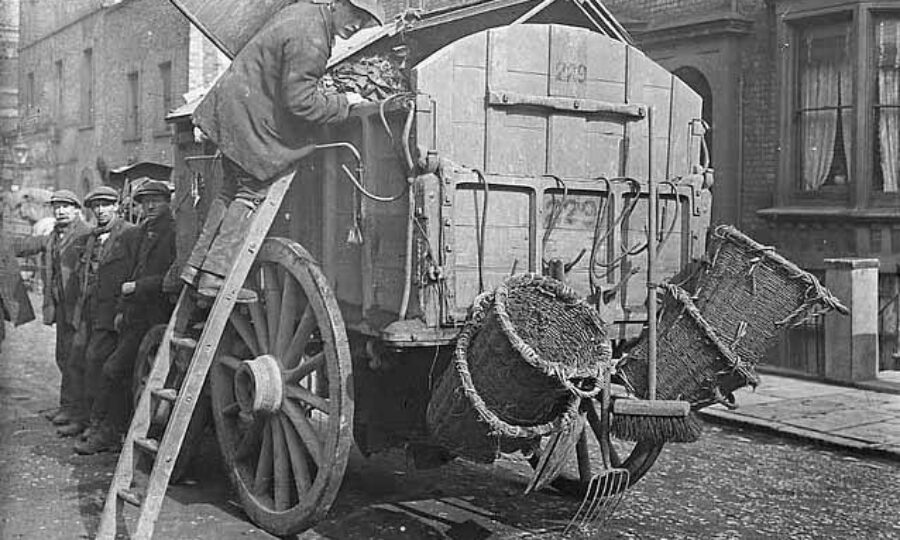
At a time when many of us are striving to use less plastic, recycle more and generally be kinder towards the environment, it is fascinating to learn that London in the late 18th to early 19th century was an early example of a zero waste society. Nearly everything was recycled, through a combination of organised systems and individual salvagers – animal bones and marrow were crushed to make glue and soap, broken bits of pottery were used to infill roads, and clothes rags repurposed into paper1. In Georgian society there was monetary value in everything, which is what catalysed this remarkable system.
At this time the composition of waste was very different to how it is now – the vast majority of household waste was coal ash, or ‘dust’ as it was known, from household fireplaces. Private companies paid London parishes for the privilege of collecting this dust, which was then taken to dust-yards by horse and cart and repurposed into bricks and fertiliser.
By the late 1800s many flats in Islington had rubbish chutes and houses had door to door collections organised by the metropolitan councils. Refuse was collected and incinerated in ‘destructors’, one of which was situated in the old borough of Finsbury. These were essentially huge chimneys belching out smoke, and residents despaired at the smog — as seen in this 1889 clipping from the Islington Gazette:
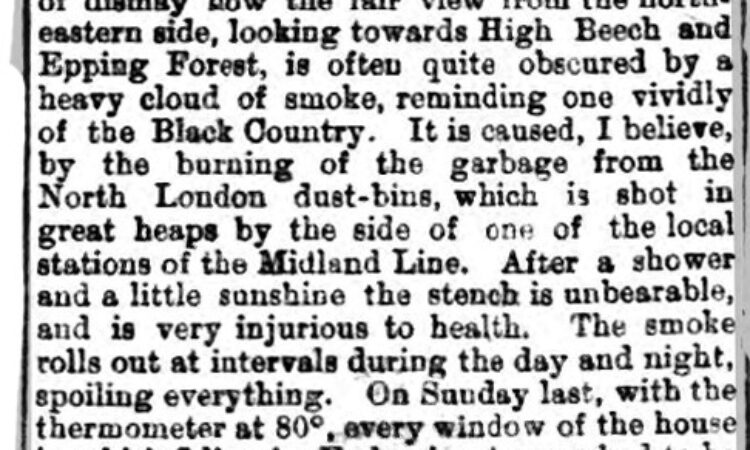
Islington Gazette, 1889

Photo 2, four road sprinkler vehicles all lined up outside in 1912
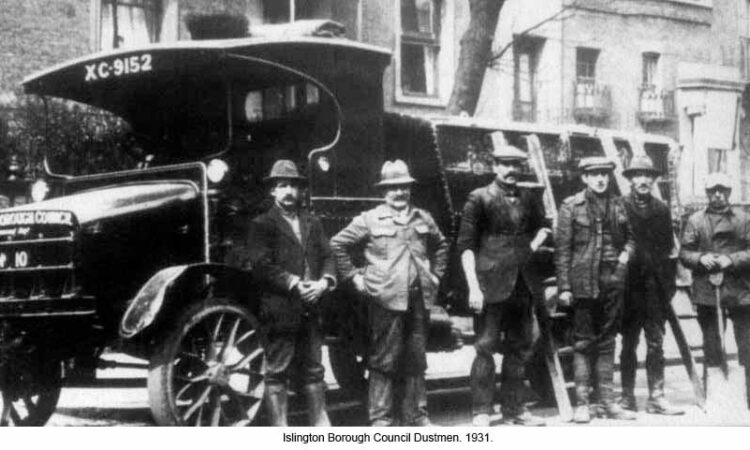
Photo 3, Islington Council dustmen stood in front of their vehicle in 1931.
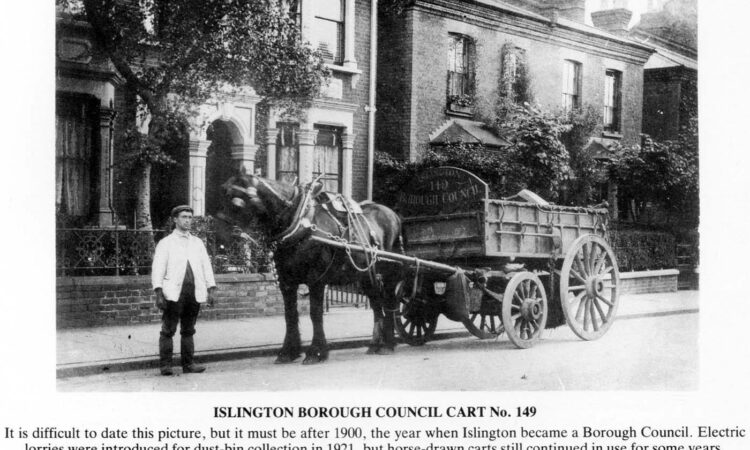
Islington Borough Council cart, with a man and a horse at the front of it. This image was taken around 1900.
In the 1930s the Ashburton Grove waste tip was built on the land which is now the Emirates Stadium. In the 60s and 70s Islington’s waste was taken by train from the depot at Ashburton Grove and tipped in sites outside of London such as Welwyn Garden City. The trains were ironically nicknamed by locals the Ashburton Grove Pullmans (Pullman’s being the name of 1st class luxury trains), or Stink Trains due to the terrible smell.
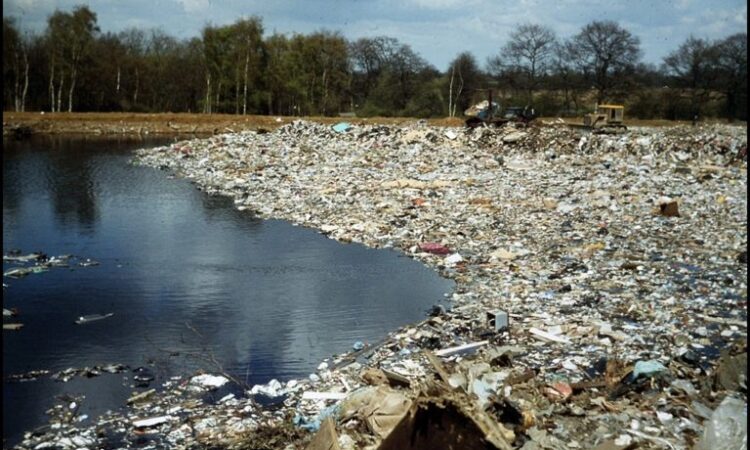
Photo 4, Tipping site at Welwyn Garden City, 1979
People in Islington also used ad-hoc methods of disposing of rubbish, with one resident remembering a neighbour ‘burning rubbish in an old falling apart dustbin in the back garden’!
The concept of recycling didn’t really come into the public consciousness until the 80s, and Islington’s first recycling service was set up by an organisation called Islington Waste Savers in 1994, charging £1.50 a week. Before this, residents remember recycling many things themselves: ‘In the 50s we didn’t have much waste as there was a use for everything. Newspapers were recycled. Milk bottles were recycled. Everything was bought fresh…butter, cheese, meat etc was cut and wrapped in paper. Nobody threw scraps away, as the dog polished off anything left.’
Now all of Islington’s waste is taken to the Edmonton Eco Park where it is burnt to provide energy for the National Grid. Recycling is taken to a sorting plant in Edmonton run by the recycling company Biffa, before being sold to make new products.
The percentage of waste that is recycled in the UK has increased hugely over the last 20 years, yet sadly the consumerist culture which produces so much of this waste continues to grow. There is value in adopting some of the habits of our zero-waste Georgian ancestors – repairing, repurposing and finding worth in what we throw away.

Photo 5, Date unknown. Note the changing uniforms from white jackets (a strange choice) to donkey coats
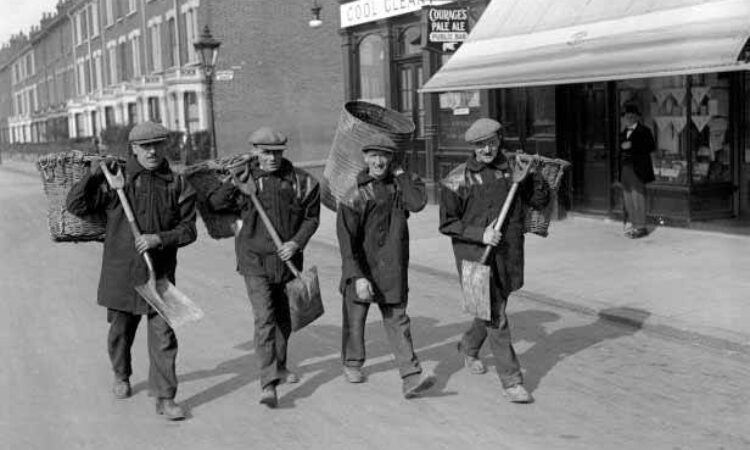
Islington Council dustmen walking down the street carrying metal bins and shovels.
Sources and more information:
Centenary History of Waste and Waste Managers in London and South East England
The Dust Destructors of Hornsey & Wood Green & Early 20th Century Recycling
Welwyn Garden City Society report
Islington Council Recycling Pilot 1998
Photos sourced by and resident stories taken from The Islington Archaeology and History society
More Local History
- Barnsbury and Caledonian Road
- Archway and Tufnell Park
- Nag’s Head and Holloway
- Angel an Pentonville
- Bunhill and St Luke’s (Finsbury)
- Finsbury Park and Stroud Green
- Highbury
- Clerkenwell
- Islington Central and Canonbury
- Newington Green
- Victoria Cross memorial stones
- Streets with a story
- Islington during the First World War
- Islington and Holloway Fire Stations
- Society of Genealogists
- D-Day (1944-2019)
- Highbury Corner V-1 bomb
- Italians in Islington
- Islington on the Home Front during the Second World War
- Islington’s Pride: Our heritage, our future
- Islington as a Place of Refuge
- Barging Through Islington: 200 Years of the Regent’s Canal
- A short history of waste and recycling in Islington
- Gay Liberation Front at 50
